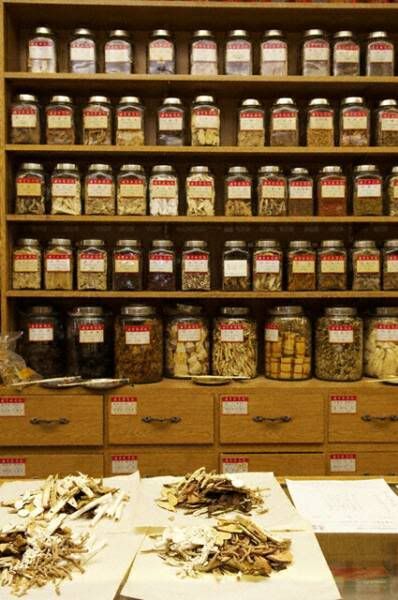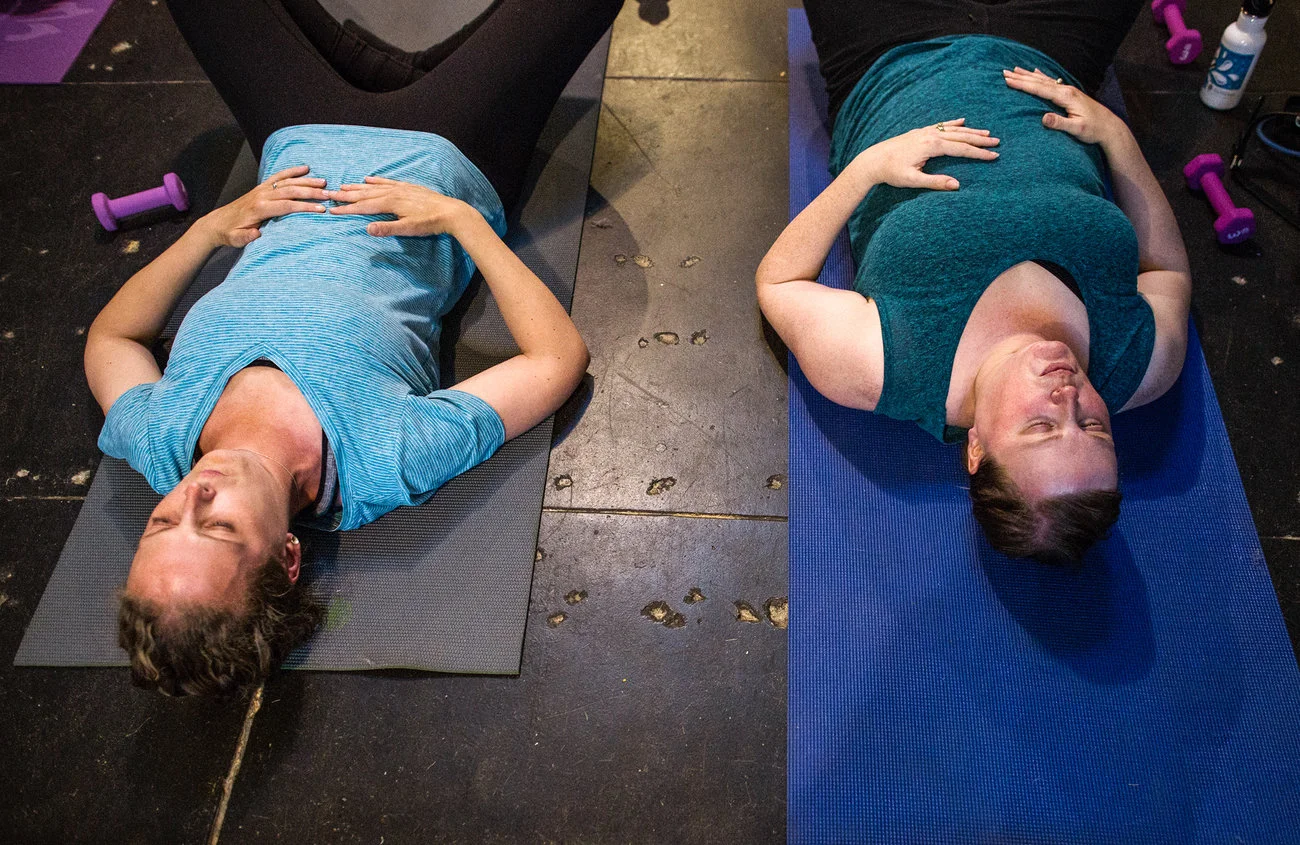Summer is less than a month away marked by the Summer Solstice that follows a full moon. That is by far the happiest sentence I’ve written so far this year. Summer is the time of year where temperature, culture, traditions and we as individuals exhibit the most Yang type activities in the most Yang of environments.
Strengthening Your "Wei Qi" to Fight Seasonal Allergies
Raise your hand if you’re prone to a sniffly, congested nose or red, itchy eyes when the trees start budding every Spring. It may be helpful to know you’re not alone. In the United States, over 60 million people suffer from allergic rhinitis and 30% of the population has experienced allergic conjunctivitis due to pollen exposure. These numbers have been steadily increasing as the world undergoes a change in climate patterns, consequentially making an impact on pollen production. Couple this with the recent discovery that most OTC decongestants don’t really work, and you have quite a large problem needing a solution.
Leaning into Water
East Asian Medicine and Diet
The Year of the Earth Dog
The Chinese New Year falls on Friday, February 16th this year. Also known as the Spring Festival in China and Taiwan, it is celebrated for the entire week and is a good time for spring cleaning and wearing bright red for good luck. On this special day it is wise to avoid accidents and focus on gentleness and appreciation to create a beneficial influence for the rest of the year.
What is QiGong?
Qigong (pronounced che-gong) is a form of gentle exercise that is a fundamental component of self-care in traditional Chinese medicine. Less acrobatic than many yoga forms and more active than most meditation practices, this movement therapy gently strengthens, calms, and supports both body and mind. It involves meditation and repeated movements that improve circulation and increase qi (energy), encouraging an overall sense of well-being.
New Blood Pressure Guidelines - Article Review
Cold and Flu Prevention
Flu season generally begins in November- December and can last until May . Every year concerns are raised about new strains and the risk to elderly or immunocompromised people. But it's not just the extra vulnerable among us whom colds and flus impact. None of us enjoy being sick, missing work, and experiencing muscle aches, fever, and chills. There are many ways we can boost our immune systems to prepare for changes in the weather and circumstances that start the spread of communicable diseases.
Relieve Sinus Congestion Through Acupuncture
Sinus congestion is one of the most common ailments that is mentioned during acupuncture appointments. It often comes up as a secondary complaint, but after applying needles to a few key points I hear about immediate benefits in ability to smell and breathe through the nose. Let’s explore how those needles work.
Celebrating the Year of the Fire Rooster
Be Present
The start of the new year is full of energy and resolve to get into healthier habits. The problem with new year’s resolutions is that there is a tendency to make big declarations and huge commitments that can be unrealistic. At Jade, we encourage you to channel the momentum in the air instead to recommit to yourself, and join us in an effort to be more present.
Finding Yang in the Time of Yin
After the end of Daylight Savings Time, most of us are well aware that we have entered a quieter time of year. In Chinese medicine, the winter is considered to be a more yin time. Every day has a balance of yin and yang, but in the winter, yin is more prominent. Yin is dark, nutritive, and restful, while yang is light, energetic, and active. As the winter is more yin in general, it calls for a calmer lifestyle.
How Chinese Herbal Medicine Can Help You Transition Seasons
3 Areas Where Acupuncture Can Improve Your Running
How to Balance your Winter Blues!
Traditional Chinese Medicine is a healthy guide for balance in anyone's life. Imbalances lead to disharmony in the body or emotions or perceptions. If allowed unchecked disharmony can become disease. Life exposes us to imbalanced conditions. Last week's 11 degree temperatures are a prime example of the kinds of extremes our pursuits of balance must overcome. The yin yang symbol is the fluid representation of extremes and their relationship to one another and ways to balance their existence.
If I wake and find it to be a cold (Yin) 11 degrees outside my desire for balance will compel me to seek fire (Yang). Conversely in July on a 98 degree day (Yang) I will wish to jump in the cool ocean surf (Yin) and will be refreshed. Balance is found in both occasions and the extremes of hypothermia or heat exhaustion are avoided. These two examples are very obvious physical situations with very linear solutions but human mental & emotional balance is not always so simple.
In a short time the longest night of the year will occur with the Winter Solstice. Daylight (Yang) will be at its lowest amount while darkness (Yin) will be at its greatest extreme. So this time of the year Yin is dominate in the form of cold, darkness, and a predominate tendency to seek the indoors that may isolate us a bit more from other people. Many become more sedentary (Yin, fat is Yin too) and the emotional/mental blahs begin to creep in. At this point the season seems to be living up to its reputation and balance seems to be far away.
Here are some very seasonal solutions to restore balance this time of year:
- Go to a party! Laughter, singing, conversation and Love are all strong Yang expressions if the heart in Traditional Chinese Medicine. The heart is the most yang organ in the body with Its constant beating, red color and tendency for passionate pursuits.
- Find recipes with cinnamon, ginger, clove and cook food in the form of soups and stews to be eaten hot.
- Lastly, strongly identify with what lights the fire inside your soul. Your imagination and creativity are crucial players for keeping a twinkle in your eyes.
Many holiday activities integrate many of the Yang items and situations that can bring balance in this most Yin of times. Contact me with your favorite Yang contribution to the season or any questions about balanced living.
 John Charlebois
John Charlebois
John Charlebois is a licensed acupuncturist specializing in traditional Chinese medicine. He graduated Magna Cum Laude with a BA of Science and Rehabilitation Administration from Springfield College in Massachusetts. John then attained his Master of Science in Oriental Medicine, Traditional Chinese Medicine, Tui Na AOBTA Certification, National Certification in Herbology at the Academy of Oriental Medicine in Austin, Texas.
What Your Food Cravings Really Mean
Food is to be enjoyed is a strong guideline around the world. Here in Portland Maine it is a rule. Enjoying tastes such as bitter, sweet, pungent, salty, or sour alone or in fantastic combinations are a reflection of good balance of the physical need for food and the mental/emotional pleasure eating brings. Blending flavors well has given us dishes like pad Thai, chili con carne, bugoki (Korean BBQ) and ratatouille to name a few. Cravings on the other hand pose a different situation. Traditional Chinese Medicine (TCM) considers cravings to indicate imbalances with each flavors corresponding organ system. Generally, craving sweet, salty, bitter, pungent or sour only gives a Licensed Acupuncturist one small piece of information when looking at the whole person. Strong cravings though provide the practitioner evidence of a greater imbalance. For centuries food therapy has been used to counteract patterns of imbalance. The basic implications in Traditional Chinese Medicine are as follows.
Craving sour has a great deal to do with the Liver(Gan) and Gaul Bladder(Dan) areas of influence. Clinically sour apples are used as part of an effective strategy to reduce the accumulation of silt and stones in the Gaul Bladder. Additionally, “sour minded” people are often treated for Liver disharmonies. The liver and Gaul Bladder are prone to either emotional or physical stagnations so craving sour is seen by the body to resolve the “stuckness”.
Pungent food cravings are associated with the Lungs and Large Intestine. TCM considers the lungs to be responsible for Immunity not only the absorption of air qi(oxygen) into the body. Pungency brings the force of defensive qi(imunity) to the surface therefore expelling the pathogen. This is consistent with the old notion break a sweat break a fever.
Craving Bitter tastes suggests to the TCM practitioner that some cardiovascular imbalances could be present. Further questions about heart health, blood pressure, healthy relationships with others and caffeine intake may be asked. Bitter cravings may also tell the acupuncturist of the digestive systems need for PH regulation or “cooling digestive heat”.
Sweet cravings are easily associated with Spleen/Pancreas and Stomach imbalances. Sugar/flower cravings are strong indicators that the job of the digestion and endocrine functions are insufficient to supply energy to the body. If blood glucose is not entering the cells the body will ask for more. Poor stress management is often a catalyst for digestive weakness and insulin inhibition from the stress hormone cortisol.
Salt cravings may indicate a need for greater focus on kidney and Urinary Bladder health. Fluid regulation and retention of salts may be compromised with poor renal performance. Balance of these substances is very important for health and with craving salt often this dynamic obviously needs treatment.
Stress often stimulates our cravings no matter what the flavor. Long ago stress was understood to be a pathogen and Traditional Chinese medicine continues to be an effective solution. Strong cravings are an indication of a deeper problem often there are other symptoms consistent with patterns of disease. Identifying and treating these patterns offer a solution safe to use without harmful side effects.
Staying Well in the Summer Heat: Traditional Chinese Medicine
Foods that Cool
Hopefully, this article arrives in the presence of sunshine and warmer weather. Summer temperatures will be here soon and I have some advice about foods to keep you cooler. In my studies of Traditional Chinese Medicine, food can play an important role in moderating the impact of heat or cold weather.
When the weather gets hot include some of these foods to cool the inside of your body, replenish fluids and replace electrolytes. Choose a diversity of foods ranging from snack to side dish to entree. Go to food websites that allow searches using these cooling foods. Nurturing against the intense heat makes an impact and allows greater enjoyment of these precious few months of summer.
Fruit
- All Citrus
- Apple
- Banana
- Cantaloupe
- Pear
- Persimmon
- Tomato
- Watermelon
Vegetables
- Alfalfa Sprouts
- Amaranth
- Asparagus
- Barley
- Bok Choy
- Broccoli
- Button Mushroom
- Cauliflower
- Celery
- Cucumber
- Legumes & Grains
- Lettuce
- Eggplant
- Mung Bean & Mung Sprouts
- Millet
- Napa Cabbage
- Radish
- Soy Milk
- Soy Sprouts
- Spinach
- Summer Squash
- Sweet Corn
- Swiss Chard
- Tempeh
- Tofu
- Zucchini
Others
- Barley Grass
- Cilantro
- Dandelion Greens
- Kudzu
- Marjoram
- Micro-algae
- Nettles
- Peppermint
- Seaweeds
- White Peppercorn
- Yogurt
- John Charlebois L AC
Defeating Cold & Flu with Chinese Medicine
In China, every school from grade school through college, offers herbs to the students during the flu season to prevent cold and flu. There are quite a few teas and herbal formulas available for prevention purposes. These anti-cold and flu formulas will be found in every family's medicine cabinet. It would be almost impossible to find a person in China who has never taken one. Woad Root (Ban Lan Gen) iWoad root tea is the most popular herbal tea to prevent and treat flu in China. In a study of over 11,000 people who were exposed to mumps, the infectious manifestation was forestalled by using a decoction of woad root. Woad Leaf (Da Qing Ye) shares similar properties with woad root. In a study of 100 people, only 10% of the treatment group that took a woad leaf decoction twice daily had upper respiratory infections during the study period, while 24% of the control group had infections. Honeysuckle Flower (Jin Yin Hua) is named "gold-and-silver flower" in Chinese. Research indicates that this flower bud can deactivate the PR8 strain of influenza virus. The study also indicates that honeysuckle works wonderfully to treat other infectious diseases, including pneumonia and viral conjunctivitis. Baical Skullcap Root (Huang Qin) is the dried root of scutellaria. It is an anti-viral agent, effective against influenza viruses. This herb and its active substance, baicalin, are used in the treatment of upper respiratory infections, either bacterial or viral. In traditional Chinese medicine, patterns are differentiated according to the imbalances of the body and the causes and stages of the disease. Herbal formulas (combination of herbs) are always recommended by practitioners because they are customized and more effective than single herbs. In future newsletters I will discuss three patterns of cold and flu symptoms, and the appropriate formulas for each type. - John Charlebois L AC
Top Antiviral Herbs
 Forsythia Fruit (Lian Qiao) is a pointed, oval-shaped capsule with a hard shell. Because of its anti-viral, anti-bacterial, anti-inflammatory and immunity-enhancing properties, forsythia fruit is widely used to treat common cold, influenza, swelling and pain in the throat, and skin inflammation.
Forsythia Fruit (Lian Qiao) is a pointed, oval-shaped capsule with a hard shell. Because of its anti-viral, anti-bacterial, anti-inflammatory and immunity-enhancing properties, forsythia fruit is widely used to treat common cold, influenza, swelling and pain in the throat, and skin inflammation.
Chinese Nutrition Tips
Benefits of Taking Your Time
Chew with mindfulness. Distractions and conversations cause people to under-chew and ingest air. Both impede healthy digestion. The stress response inhibits the digestive tract from absorbing nutrients by diverting blood flow from the organs. So, eating under calm, quiet, contented conditions can be an easy step anyone can take to improve their health.
In our next food issue I will explain how cravings are interpreted within Traditional Chinese Medicine.
Nurture-Attitude
- John Charlesbois L. Ac.



















